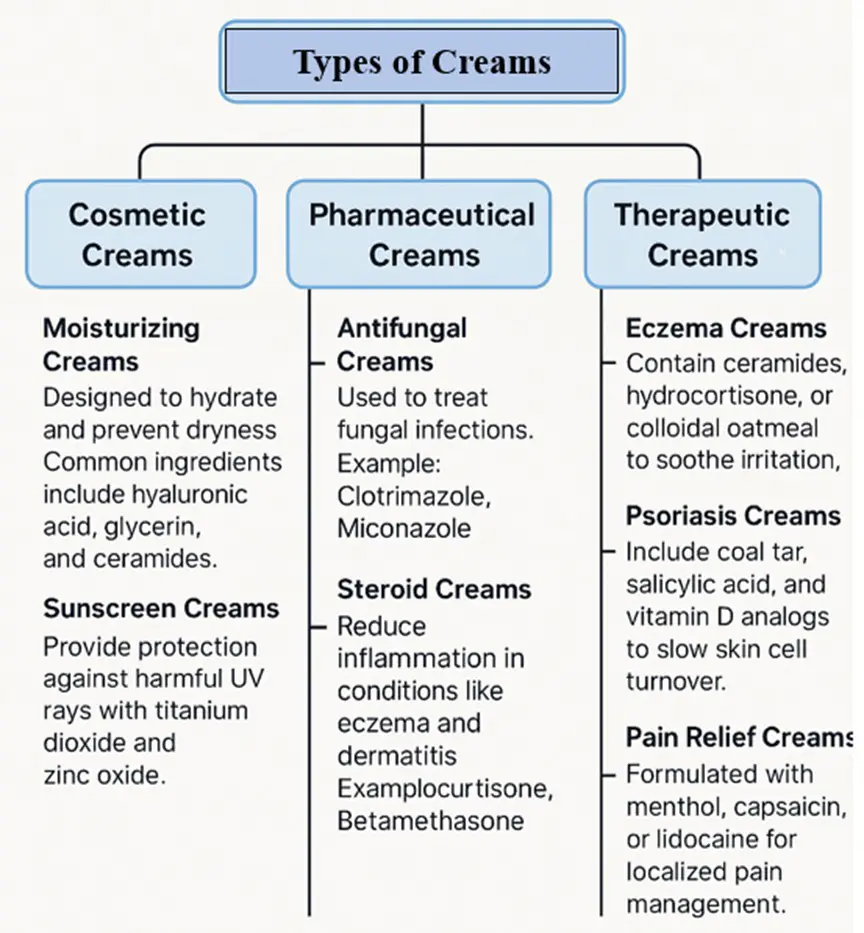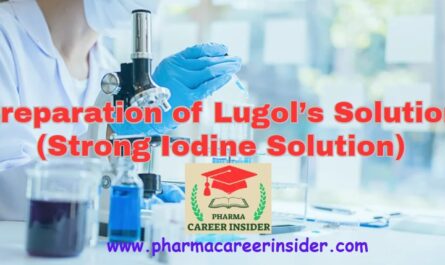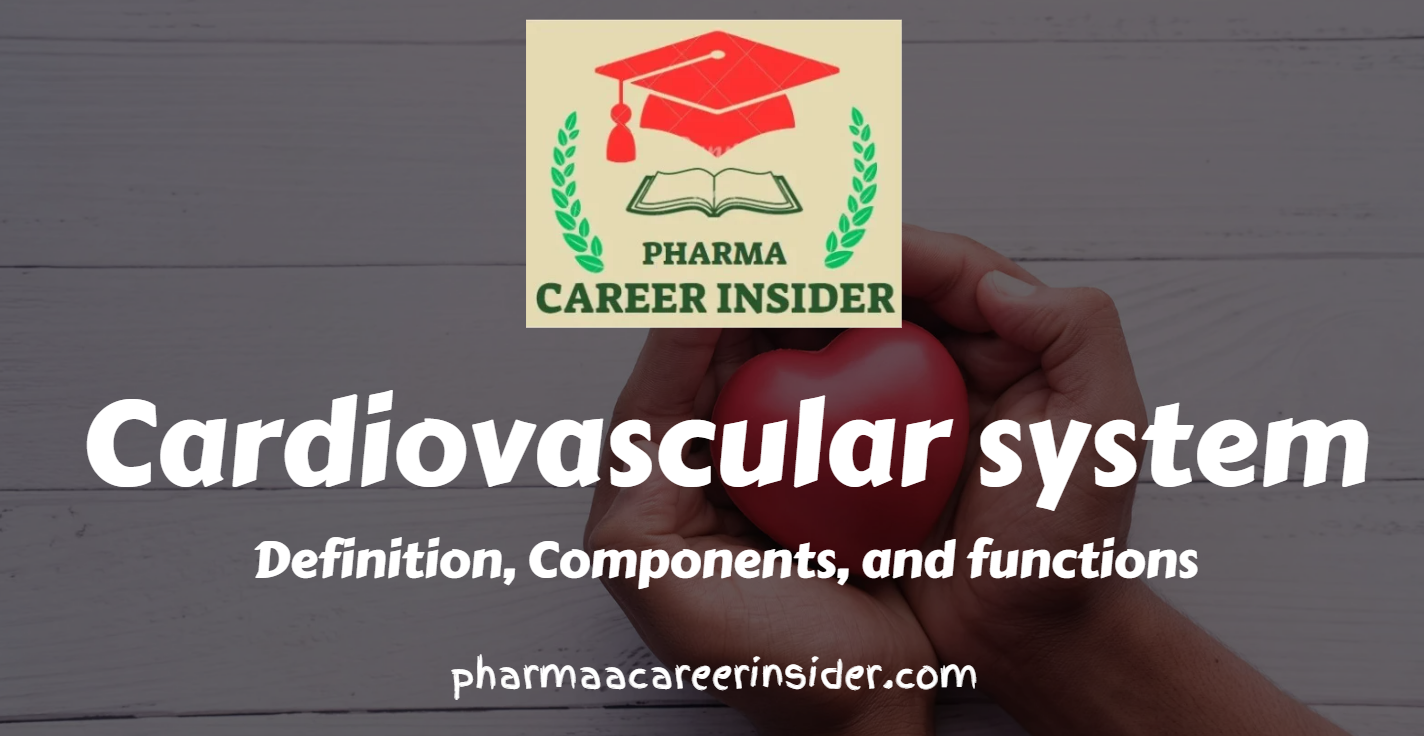What is a cream?
Creams are semi-solid emulsions widely used in pharmaceuticals, cosmetics, and personal care products. They deliver active ingredients effectively and offer benefits like moisturization, barrier protection, and treatment of various skin conditions. Understanding the preparation process, key ingredients, and quality control ensures efficacy and safety.
Challenges in Cream Formulation
The formulation of creams involves several challenges, including:
- Achieving the right consistency and stability.
- Ensuring effective drug or active ingredient delivery.
- Preventing microbial contamination.
- Enhancing user acceptability regarding texture and absorption.
Why These Challenges Matter
Unstable creams lead to phase separation, making them ineffective. Contaminated products pose health risks, while ineffective ingredient delivery reduces therapeutic benefits. These issues can result in product recalls, consumer dissatisfaction, and regulatory non-compliance.
The Cost of Getting It Wrong
- Case Study 1: In 2018, a personal care brand had to recall a batch of antifungal cream due to microbial contamination, leading to regulatory action and financial losses.
- Case Study 2: A pharmaceutical company faced lawsuits due to an ineffective topical corticosteroid cream that failed to deliver the intended results, highlighting the importance of formulation integrity.
Methods of Cream Preparation
To overcome these challenges, understanding the preparation methods, ingredients, and quality control measures is crucial. Creams are primarily prepared using two major methods:
1. Fusion Method
- Used for creams containing waxy and high-melting point ingredients.
- The oil phase (lipophilic ingredients) and water phase (hydrophilic ingredients) are heated separately and mixed with continuous stirring.
- Cooling leads to phase stabilization.
- Example: Cold creams, moisturizing creams.
2. Emulsification Method
- Utilized for emulsions where one phase (oil or water) is dispersed in the other.
- Emulsifying agents stabilize the dispersion.
- It can be performed at room temperature or under controlled heat.
- Example: Medicinal creams such as hydrocortisone creams.
Additional Techniques:
- Phase Inversion Technique: Used to switch between oil-in-water and water-in-oil types for stability adjustments.
- Homogenization: Enhances uniformity and smooth texture.
- Cold Processing: Suitable for temperature-sensitive ingredients.
Types of Creams and Their Applications
Creams serve a wide range of purposes, from skincare to medicinal treatments. They are broadly categorized into three types:
1. Cosmetic Creams
These creams are primarily used for skin care and beauty enhancement.
- Moisturizing Creams – These are designed to hydrate and prevent dryness. Common ingredients include hyaluronic acid, glycerin, and ceramides.
- Anti-Aging Creams – Targets wrinkles, fine lines, and skin elasticity using retinol, peptides, and antioxidants.
- Sunscreen Creams – Protect against harmful UV rays with titanium dioxide and zinc oxide.
2. Pharmaceutical Creams
These are formulated for medicinal purposes and contain active pharmaceutical ingredients.
- Antifungal Creams: Used to treat fungal infections. Example: Clotrimazole, Miconazole.
- Antibiotic Creams: Prevent bacterial infections. Example: Neomycin, Mupirocin.
- Steroid Creams: Reduce inflammation in conditions like eczema and dermatitis. Example: Hydrocortisone, Betamethasone.
3. Therapeutic Creams
These creams provide relief from chronic skin conditions or localized pain.
- Eczema Creams – Contain ceramides, hydrocortisone, or colloidal oatmeal to soothe irritation.
- Psoriasis Creams – To slow skin cell turnover, include coal tar, salicylic acid, and vitamin D analogs.
- Pain Relief Creams – Formulated with menthol, capsaicin, or lidocaine for localized pain management.

Common Cream Formulation Mistakes and How to Avoid Them
Even experienced formulators can encounter issues during cream preparation. Below are some common formulation errors and solutions:
1. Improper Emulsification
- Issue: If emulsification is not done properly, the cream may separate into its oil and water components.
- Solution: Use appropriate emulsifiers like polysorbates and ensure high-shear mixing for uniformity.
2. Phase Separation
- Issue: Water and oil components separate due to instability in the emulsion.
- Solution: Optimize the emulsifier concentration, increase the homogenization time, and conduct stability testing before large-scale production.
3. Microbial Growth
- Issue: A cream contaminated with bacteria or fungi can lead to product spoilage and infections.
- Solution: Use preservatives such as phenoxyethanol and parabens and maintain sterile production conditions.
4. Incorrect pH Balance
- Issue: A pH that is too high or too low can cause skin irritation or reduce the cream’s effectiveness.
- Solution: Adjust the pH using buffering agents like citric acid or sodium hydroxide to maintain skin-friendly pH levels (around 5-7).
5. Inconsistent Viscosity
- Issue: Some creams may become too thick or too runny over time.
- Solution: Use rheology modifiers like carbomers or xanthan gum to maintain the desired texture and stability.
Advancements in Cream Formulation Technologies
New technologies are transforming the way creams are formulated, enhancing their effectiveness, stability, and skin absorption.
1. Nanotechnology in Creams
- What It Does: It uses nanoparticles to improve ingredient penetration and stability.
- Example: Sunscreens with nano-zinc oxide provide better UV protection without leaving a white residue.
2. Liposomal Delivery Systems
- What It Does: Encapsulates active ingredients within lipid vesicles to improve bioavailability and controlled release.
- Example: Retinol liposomal creams deliver retinol effectively while minimizing irritation.
3. Microemulsions in Creams
- What It Does: Microemulsions enhance cream stability and absorption due to their tiny droplet size.
- Example: Antifungal creams formulated using microemulsions offer better skin penetration and drug delivery.
Key Ingredients in Cream Formulation
1. Oil Phase Components
- Lipids and Emollients: Petrolatum, lanolin, shea butter, and mineral oils.
- Waxes: Beeswax, paraffin wax.
- Silicones: Dimethicone for smoothness and water resistance.
2. Aqueous Phase Components
- Water: Purified or deionized for high-quality formulations.
- Humectants: Glycerin and propylene glycol to retain moisture.
3. Emulsifiers and Surfactants
- Non-ionic emulsifiers: Polysorbates, cetyl alcohol.
- Anionic emulsifiers: Sodium lauryl sulfate.
- Cationic emulsifiers: Benzalkonium chloride (also an antimicrobial).
4. Preservatives
- Parabens: Methylparaben, propylparaben.
- Alternative preservatives: Phenoxyethanol, benzyl alcohol.
5. Active Ingredients
- Pharmaceutical creams: antibiotics, antifungals, corticosteroids.
- Cosmetic creams: Retinol, hyaluronic acid, niacinamide.
- Sunscreen creams: titanium dioxide, zinc oxide.
6. Fragrances and Colorants
- Used to enhance consumer appeal.
- Natural essential oils or synthetic fragrances.
Quality Control in Cream Formulation
Strict quality control ensures efficacy, safety, and compliance.
1. Physicochemical Tests
- pH Testing: Optimal pH for skin compatibility (typically 4.5-6.5).
- Viscosity Measurement: Ensures appropriate consistency using rheometers.
- Spreadability: Evaluates ease of application.
2. Stability Testing
- Temperature Stability: Store under different conditions to check phase separation.
- Freeze-Thaw Cycling: Identifies stability under fluctuating temperatures.
- UV Exposure: Ensures active ingredients do not degrade.
3. Microbial Testing
- Total Plate Count: Ensures microbial safety.
- Pathogen Testing: Checks for harmful bacteria (e.g., Pseudomonas aeruginosa, Staphylococcus aureus).
4. Packaging and Compatibility Testing
- Container Closure Integrity: Prevents contamination.
- Material Compatibility: Ensures no adverse reactions between the cream and packaging.
Conclusion
Cream formulation is a meticulous process requiring precise ingredient selection, proper preparation methods, and rigorous quality control. By following the correct steps, companies can ensure safe, effective, and high-quality products for consumers. Whether for medicinal or cosmetic use, mastering cream formulation is essential for success in the pharmaceutical and personal care industries.
Frequently Asked Questions (FAQs)
1. What is the difference between oil-in-water and water-in-oil creams?
Oil-in-water creams (O/W) have water as the continuous phase, making them lighter and non-greasy. Water-in-oil creams (W/O) have oil as the continuous phase, offering better moisture retention.
2. Why is emulsification important in cream formulation?
Emulsification ensures the stable mixing of oil and water phases, preventing separation and enhancing consistency.
3. How can microbial contamination be prevented in cream production?
Using proper preservatives, maintaining sterile conditions, and conducting microbial testing ensure contamination-free creams.
4. What are the best natural emulsifiers for creams?
Natural emulsifiers include lecithin, beeswax, and candelilla wax, which are commonly used in organic skincare formulations.
5. How is cream stability tested?
Stability testing involves pH assessment, freeze-thaw cycling, viscosity measurement, and microbial analysis to ensure long-term effectiveness.





This website is very useful and informative